Red aquarium plants can add a stunning burst of vibrant color to your aquascape, creating a visually captivating underwater environment. These plants provide a beautiful aesthetic and practical purpose in maintaining a healthy aquatic ecosystem.
By incorporating red aquarium plants into your aquascape, you can create a captivating focal point that adds depth and dimension to your underwater world. The vibrant red hues of these plants deliver a unique contrast against the greenery of other underwater plants, creating a visually attractive display.
In addition to their visual appeal, red aquarium plants also play a crucial role in maintaining water quality. These plants absorb excess water nutrients, helping prevent algae growth and promoting a balanced ecosystem. They also provide shelter and hiding places for fish, creating a more natural and comfortable environment for them.
Incorporating Red Aquarium Plants into your aquascape can create a visually striking and biologically beneficial underwater environment.
Why Grow Red Aquarium Plants?
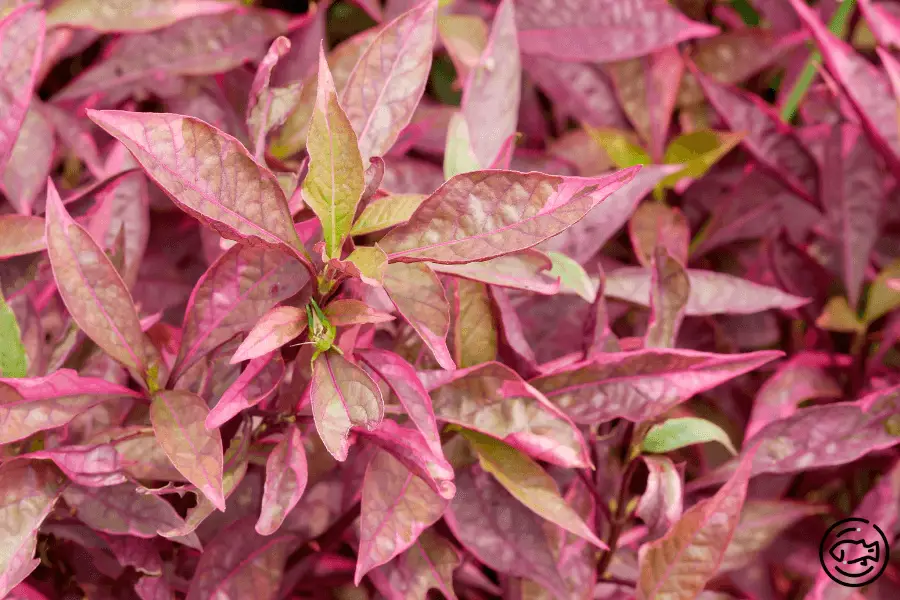
When it comes to aquascape aquariums, there is something undeniably captivating about the presence of red plants. They add a vibrant pop of color that can truly transform the aesthetic appeal of an aquarium.
If you’ve ever observed an aquascaped aquarium decorated with dazzling and vibrant crimson flora, you’ll understand the excitement it generates. While lush green plants certainly possess their beauty, there’s an undeniable allure to the striking, rose-colored foliage that captivates the gaze.
Cultivating thriving red plants might pose a slight challenge for novices. Yet, armed with the appropriate gear and expertise, it unfolds as an intriguing facet of the planted tank pursuit that any aquarist can master!
Top 7 Best Red Aquarium Plants
When it comes to red aquarium plants, there is a wide variety of options to choose from. In this section, I will be discussing the top 10 best red aquarium plants that can add a vibrant and stunning aesthetic to your aquatic environment. We will explore each plant’s unique characteristics and features, highlighting their growth patterns, care requirements, and the visual impact they can bring to your aquarium. So, let’s dive in and discover the breathtaking beauty of:
- Ludwigia natans ‘Super Red’
- Alternanthera reineckii ‘Mini’
- Alternanthera reineckii ‘Rosanervig’
- Rotala rotundifolia ‘Red’
- Rotala macrandra ‘Mini’
- Nymphaea zenkeri – Tiger Lotus
- Ludwigia peruensis
1. Ludwigia Natans ‘Super Red’
Ludwigia Natans ‘Super Red’
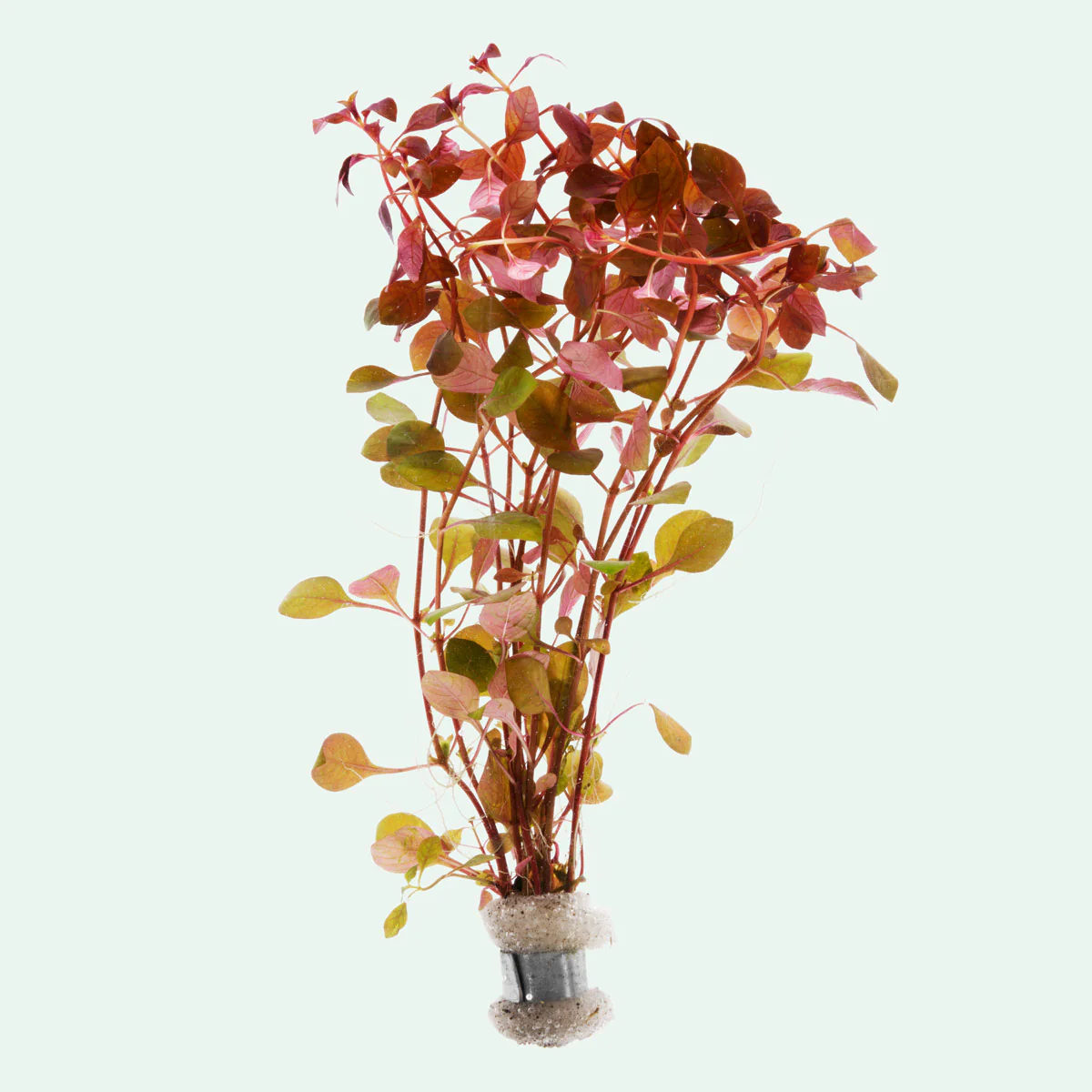
- Popular choice for aquascaping.
- Beginner-friendly red aquatic plant.
- Prolific growth with small, rounded leaves.
- Color varies based on tank conditions.
- Colors range from green to deep red.
- Best grouped in clusters of 10 or more.
- Regular pruning and replanting create dense bushes.
– It is a visually striking plant with bright red leaves. – The plant has a compact growth habit, making it suitable for smaller aquariums. – Ludwigia natans ‘Super Red’ can thrive in various water conditions, from soft to hard water. – This plant adds depth and visual interest to aquascapes, creating a dynamic and eye-catching display.
For optimal growth and maintenance of Ludwigia natans ‘Super Red,’ consider the following suggestions:
- Provide ample lighting: Ludwigia natans ‘Super Red’ requires moderate to high lighting levels to maintain its vibrant red color.
- Supplement with CO2: Adding carbon dioxide (CO2) can enhance this plant’s growth and color intensity.
- Maintain nutrient-rich water: Regularly fertilizing the aquarium with essential nutrients such as iron and potassium will help promote healthy growth.
- Trim regularly: Pruning the plant’s stems will control its size, encourage bushier growth, and prevent leggy stems.
By following these tips, you can ensure that Ludwigia natans ‘Super Red’ thrives in your aquarium, adding beauty and drama to your aquascape.
Looking for a plant to add a splash of red to your aquascape? Look no further than Alternanthera reineckii ‘Mini’ – it’s like planting a little firework in your aquarium!
2. Ludwigia Peruensis
Ludwigia Peruensis

- Unique coloring with green tops and red bottoms.
- Leaf colors vary with environmental conditions.
- Oval, pointed leaves in opposite pairs.
- Colors range from green to red, gold, or orange.
- Best planted in bunches of 10-12 stems.
- Enhances color variation in planted tanks.
- Requires high lighting and nutrients for vibrant colors.
- CO2 is optional but accelerates growth.
- High iron content promotes redness.
- Propagate by taking stem cuttings and replanting.
To provide a comprehensive overview of Ludwigia peruensis, let’s delve into its characteristics and care requirements.
Certainly, here’s the information presented in a table format:
| Characteristic | Details |
|---|---|
| Scientific Name | Ludwigia peruensis |
| Common Name | Peruvian Ludwigia |
| Color | Vibrant red |
| Growth Rate | Moderate |
| Lighting Requirement | Medium to high |
| CO2 Requirement | Medium to high |
| Water Parameters | pH: 6.0-7.5, Temperature: 68-82°F (20-28°C) |
Ludwigia peruensis is known for its striking red coloration, creating a focal point in any aquascape. With proper lighting and nutrient supplementation, it can thrive and exhibit robust growth. Providing optimal CO2 levels promotes healthy growth and intensifies the vibrant red hue of the leaves.
This plant benefits from regular pruning to maintain its desired shape and prevent excessive growth. Be mindful of water parameters such as pH and temperature to ensure the well-being of Ludwigia peruensis.
Incorporating Ludwigia peruensis into your aquascape not only adds aesthetic appeal but also enhances the overall ambiance of your aquarium.
Remember, Ludwigia peruensis requires adequate care and attention for optimal growth and longevity – making it an excellent addition to any aquascape. Ensure you have this beautiful species in your collection today!
3. Alternanthera Reineckii ‘Rosanervig’
Alternanthera Reineckii ‘Rosanervig’
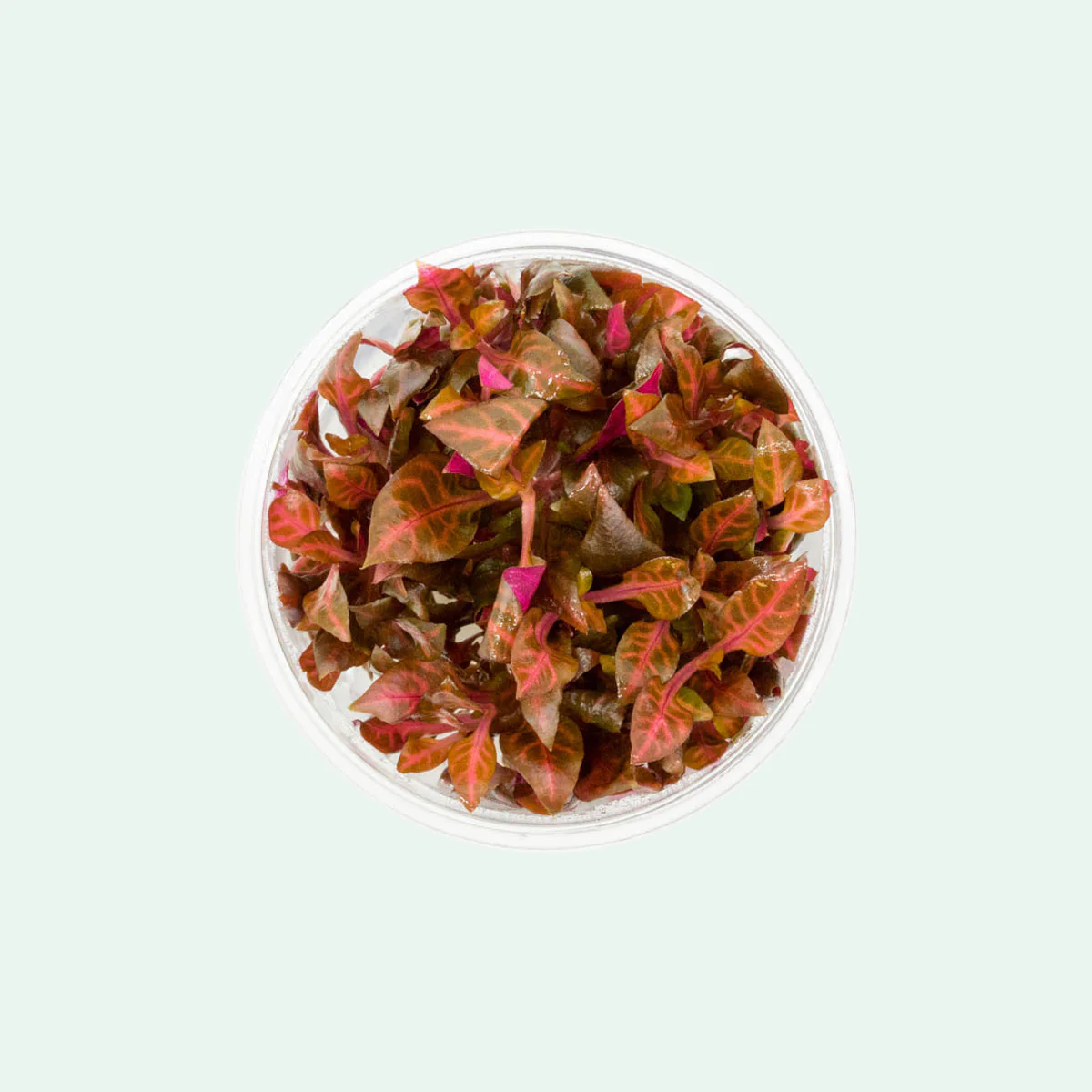
- Beautiful aquatic stem plant in the Alternanthera family.
- Features rich pink leaves with pale veins.
- Requires CO2 injection, nutrients, and proper substrate.
- More delicate than AR Mini.
- Thrives with care, showcasing vivid colors.
- Ideal for midground or background in different tank sizes.
- Requires regular pruning to prevent overgrowth.
- Can grow emersed with flowers above the surface.
Certainly, here’s the information presented in a table format:
| Attribute | Details |
|---|---|
| Scientific Name | Alternanthera reineckii ‘Rosanervig’ |
| Difficulty Level | Medium |
| Lighting Requirements | Medium-High |
| CO2 Requirements | Highly recommended |
| Growth Rate | Moderate to fast |
| Tank Positioning | Midground or background |
This plant provides a unique visual appeal with its contrasting light and dark shades of red, creating a captivating focal point in any aquascape. It requires medium to high lighting and benefits from adding CO2 for optimal growth. With its moderate to fast growth rate, it can be placed in either the midground or the background of an aquarium.
Rotala rotundifolia ‘Red’ – the plant that brings the fiery passion of a red sunset to your aquascape without the sunburn.
4. Nymphaea Zenkeri – Tiger Lotus
Nymphaea Zenkeri – Tiger Lotus
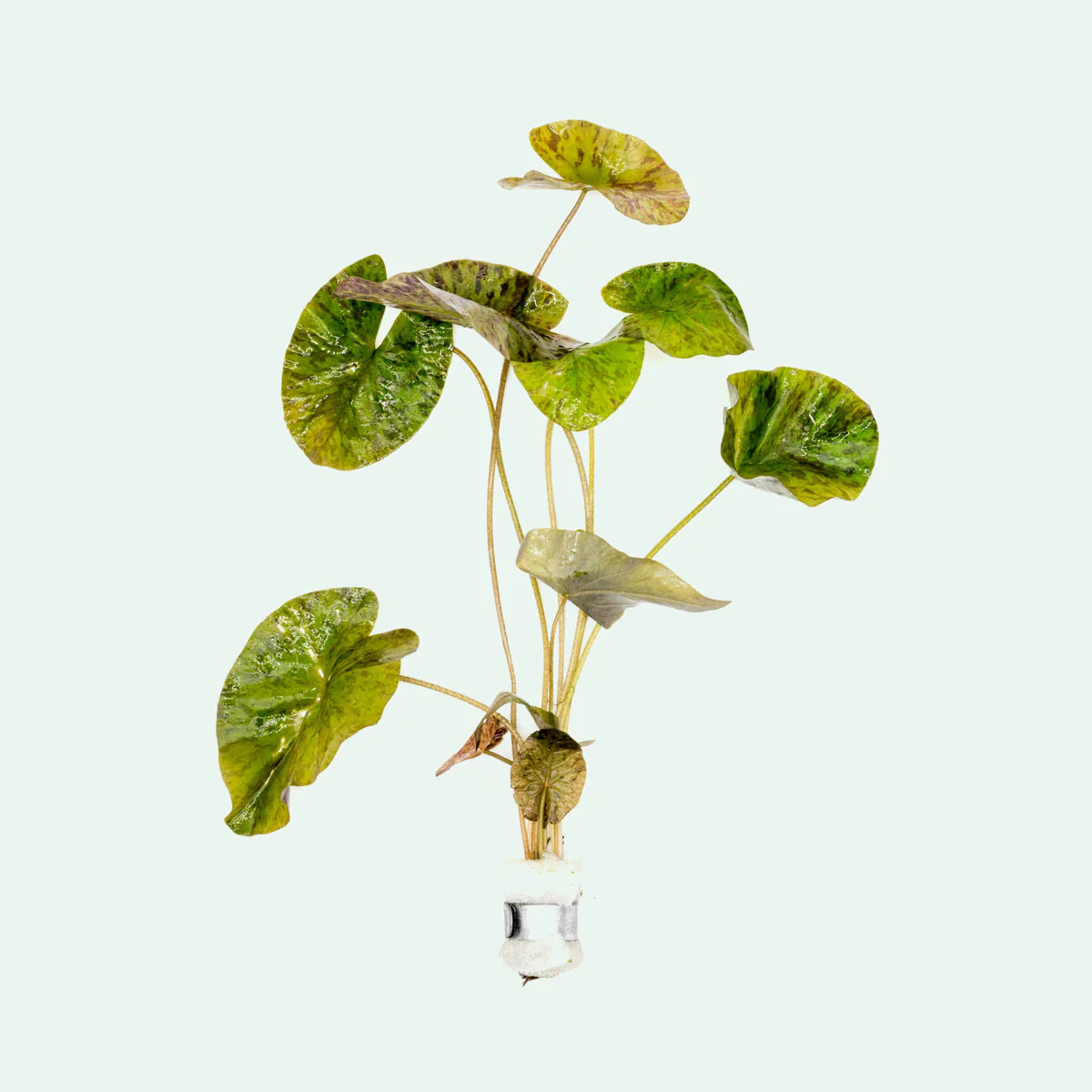
- Originates from West Africa.
- Features bold and colorful large foliage.
- Leaf colors vary from green to maroon with purple spots.
- Adds vibrant contrast to planted aquariums.
- Can grow exceptionally large and reach the water’s surface.
- Pruning needed to control surface growth.
- Requires clean water, strong lighting, CO2, and nutrient-rich soil.
- Ideal for larger aquarium tanks.
Nymphaea zenkeri is a striking aquatic plant commonly known as Tiger Lotus. Its unique appearance and beautiful coloration add a vibrant and captivating touch to aquascape aquariums.
The following table provides essential information about Nymphaea zenkeri – Tiger Lotus:
Certainly, here’s the information presented in a table format:
| Characteristics | Details |
|---|---|
| Scientific Name | Nymphaea zenkeri |
| Common Name | Tiger Lotus |
| Origin | West Africa |
| Lighting Requirement | Moderate to high |
| Water pH | 6.0-7.5 |
| Temperature Range | 72°F-82°F (22°C-28°C) |
| Growth Rate | Moderate |
Nymphaea zenkeri: Tiger Lotus requires moderate to high lighting and thrives in water with a pH range of 6.0-7.5. It prefers temperatures between 72°F-82°F (22°C-28°C) for optimal growth. Its growth rate is moderate, making it suitable for various aquascaping setups.
Tiger Lotus is native to West Africa and has been cultivated and appreciated by aquarium enthusiasts for many years. Its unique shape and vibrant colors have made it a popular choice among aquarists looking to add beauty and diversity to their underwater landscapes.
Overall, Nymphaea zenkeri – Tiger Lotus is an excellent choice for aquascaping due to its striking appearance, moderate care requirements, and ability to thrive in different aquatic environments.
Ready to dive into the allure and drama of red aquarium plants? Let’s explore Ludwigia peruensis, the fiery addition that will make your aquascape sizzle!
5. Rotala Macrandra ‘Mini’
Rotala Macrandra ‘Mini’
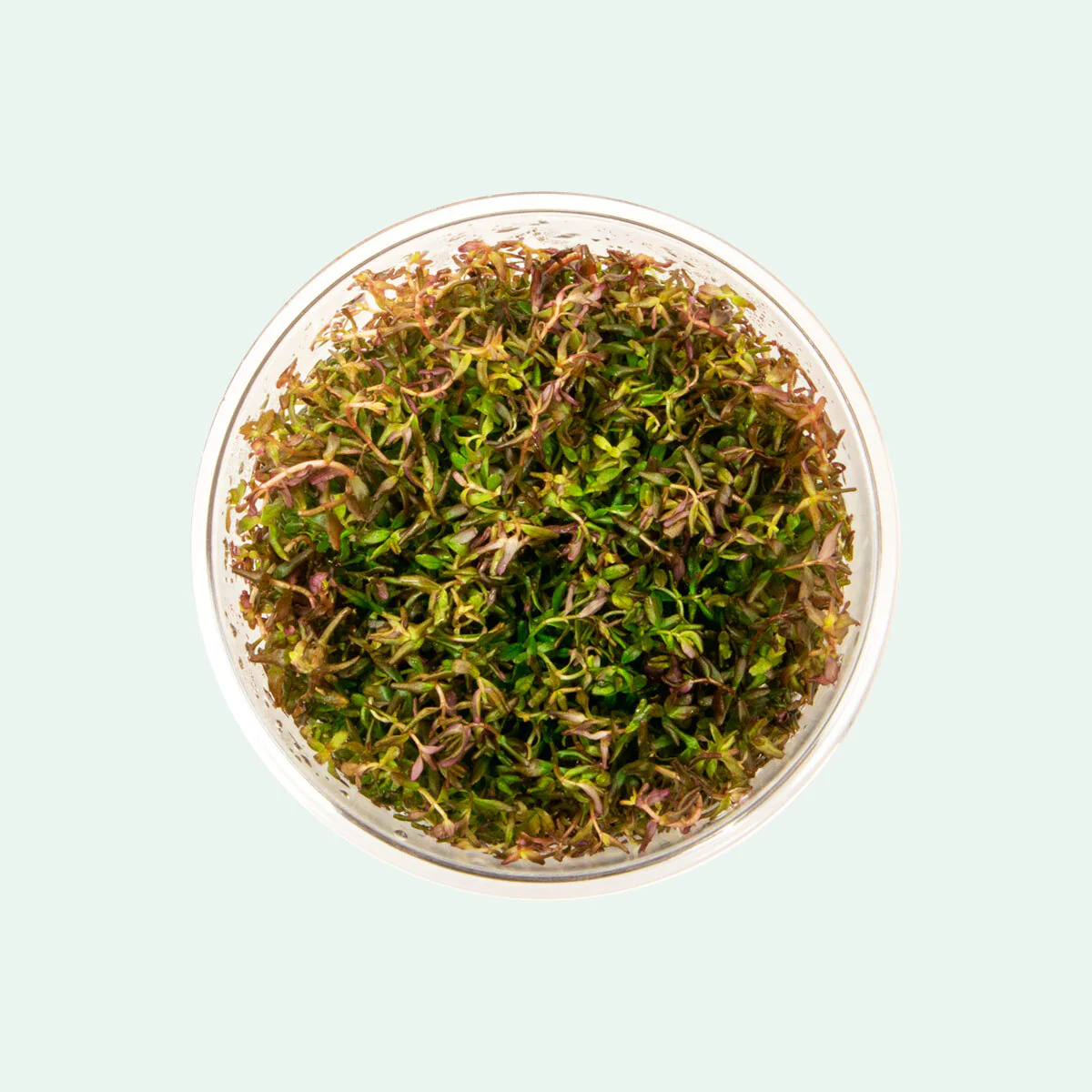
- Unique leaf shape with deep red to magenta hues.
- Ideal for nano planted aquarium backgrounds or midground in larger tanks.
- Requires quality lighting, CO2, and soft water for growth.
- Micronutrients needed for intense colors.
- Adequate spacing between stems to avoid shading lower leaves.
- Demanding and challenging to maintain but rewarding when successful.
Here are the key details about Rotala macrandra ‘Mini’:
- Description: This aquatic plant features small leaves that range from green to vibrant red, depending on the lighting conditions in the aquarium. It has a compact growth habit, making it suitable for smaller tanks or as a foreground plant.
- Size: Rotala macrandra ‘Mini’ grows up to 5-10 cm in height, making it an excellent choice for creating depth and dimension in your aquascape.
- Lighting Requirements: This plant thrives in moderate to high lighting conditions. Providing adequate light intensity and spectrum is crucial for maintaining its vivid red coloration.
- CO2 Injection: To ensure healthy growth and vibrant colors, it is recommended to provide CO2 injection in the tank. Rotala macrandra ‘Mini’ benefits from an optimal CO2 level of around 20-25 mg/liter.
- Water Parameters: The ideal water temperature for this plant ranges from 22-28°C (72-82°F) with a pH range of 6.0-7.5. It prefers soft to moderately hard water.
The Nymphaea zenkeri – Tiger Lotus adds a touch of high drama to your aquascape with its vibrant red hues.
6. Alternanthera Reineckii ‘Mini’
Alternanthera Reineckii ‘Mini’
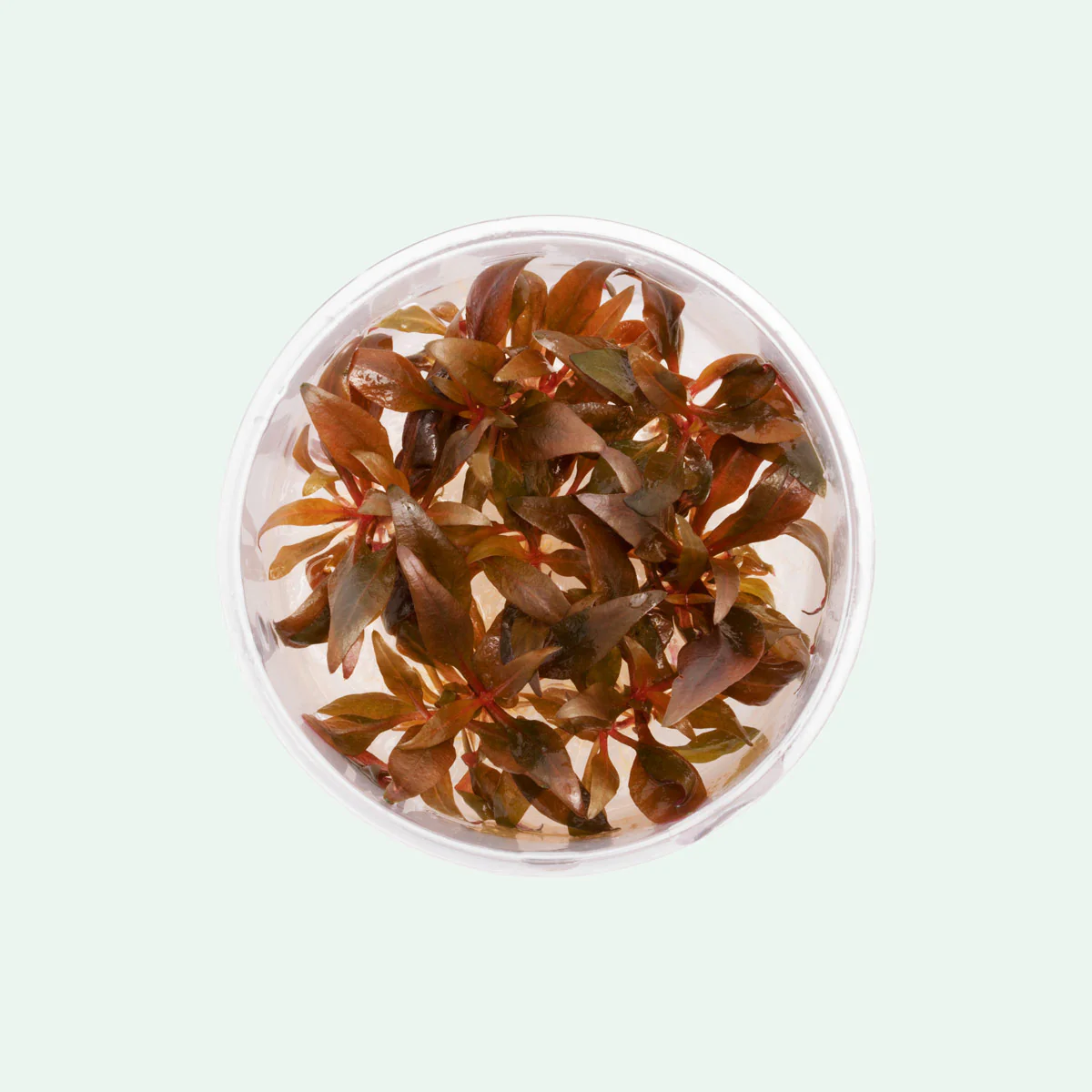
- Dwarf variant of Alternanthera Reineckii.
- Ideal for nano aquariums, creates violet-red bushes.
- Common in Dutch-style planted tanks.
- Requires CO2, nutrient-rich soil, and medium-high lighting.
- Inadequate lighting leads to leggy growth.
- Easy propagation through stem trimming and replanting.
Alternanthera reineckii ‘Mini’ is a captivating red aquarium plant that adds vibrant color to any aquascape. Its compact size and striking red foliage make it popular among aquarists.
Cultivating Alternanthera reineckii ‘Mini’ requires careful attention to lighting, CO2 levels, and nutrient supplementation. Its unique growth pattern creates a visually appealing contrast in the aquarium, making it an excellent choice for creating focal points or adding depth to the overall design.
Take advantage of the opportunity to enhance your aquascape with this stunning red plant! Get ready to turn your aquarium into a fiery red masterpiece with Alternanthera reineckii ‘Rosanervig’!
7. Rotala Rotundifolia ‘Red’
Rotala Rotundifolia ‘Red’
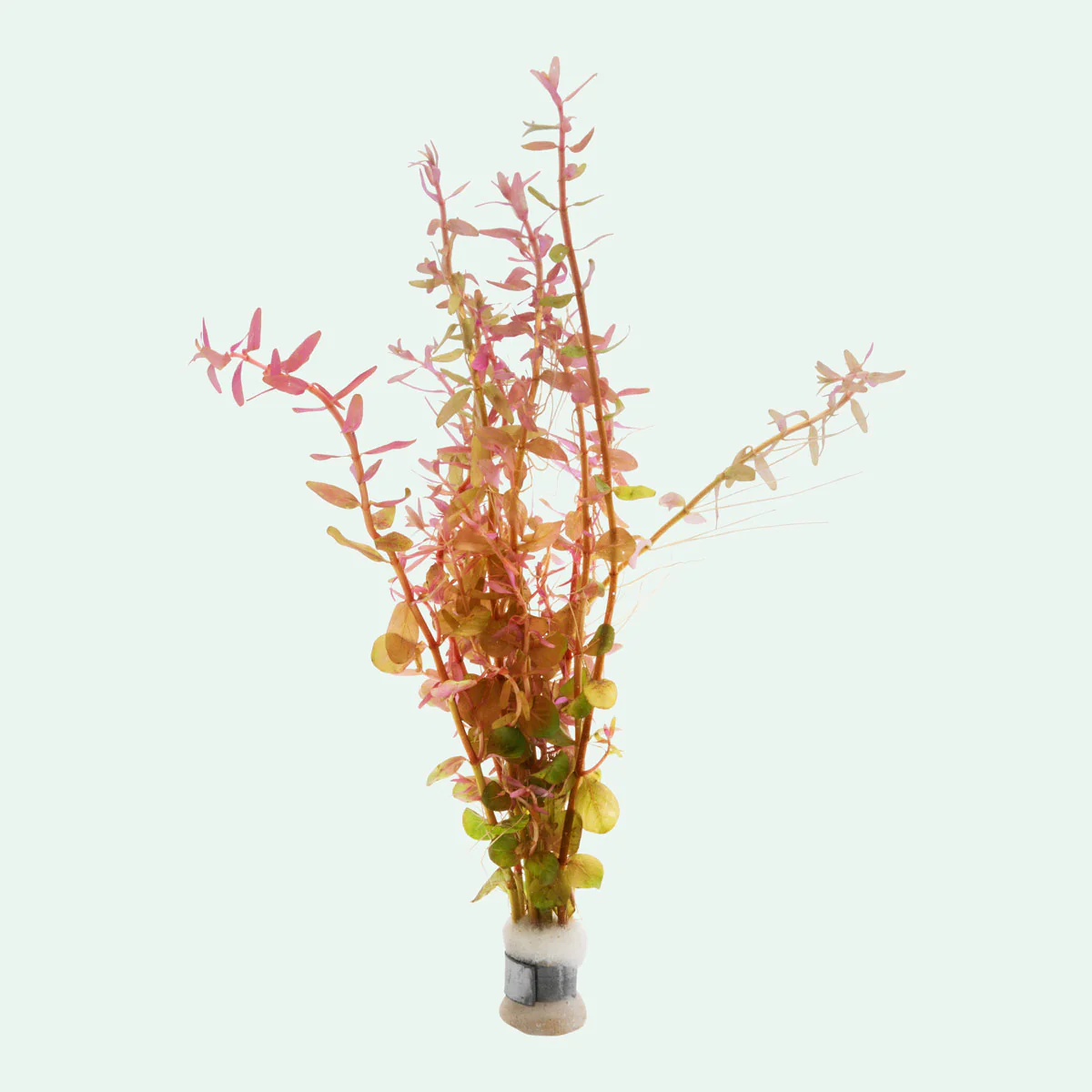
- Well-known aquarium stem plant.
- Originates from Southeast Asia.
- Variations available, like Rotala Rotundifolia Red.
- Color varies (pink, orange, yellow, deep red).
- Prolific grower, needs routine maintenance.
- Thrives with nutritious substrate, medium lighting, CO2, and plant fertilizer.
This Rotala rotundifolia variety requires proper care and maintenance to thrive in an aquatic environment. It requires moderate to high lighting levels and prefers nutrient-rich substrates to support its growth. CO2 supplementation can also be beneficial for promoting optimal growth and color development.
One interesting feature of Rotala rotundifolia ‘Red’ is its ability to grow both submerged and emersed. It displays vibrant red or pink foliage when grown underwater, while emersed growth results in green leaves. This versatility allows aquascapes to experiment with different forms and appearances when designing their aquascape.
Tips for Growing and Maintaining Red Aquarium Plants
Growing and maintaining red aquarium plants requires specific techniques and considerations to ensure their health and vibrancy. Here are some essential tips to help you successfully cultivate and care for these beautiful aquatic plants:
- Provide Adequate Lighting: Red aquarium plants require high-intensity lighting to thrive. Ensure they have the recommended amount of light for optimal growth and coloration, and consider using LED lights specifically designed for these aquarium plants.
- Monitor Water Parameters: Maintaining stable water parameters for red aquarium plants is crucial. Regularly test and adjust the pH, temperature, and nutrient levels to create an ideal environment, and also use a reliable water testing kit & provide supplemental fertilizers as necessary.
FAQs about Red Aquarium Plants
What are some easy-to-care-for red aquarium plants for beginners?
Suppose you’re new to aquarium plant care. In that case, you can start with these low-demanding red plants: – Ludwigia natans ‘Super Red’ – Alternanthera reineckii ‘Mini’ – Rotala rotundifolia ‘Red.’ These plants are relatively easy to grow and can adapt to a wide range of tank conditions, making them suitable for beginner aquarists.
Do they need more light?
Certainly, most red aquarium plants thrive under high-intensity lighting to showcase their vibrant hues. While exceptions exist, the majority of species flourish under high or at least moderate light conditions to exhibit their best colors.
How do you maintain their vibrant color?
Maintaining the striking red color of aquarium plants requires a trifecta of factors: adequate light, nutrient supply, and carbon dioxide. Additionally, some plants may respond to extremely low nitrate levels by intensifying their red pigmentation.
What role does red light play for tank greenery?
Red light can enhance the redness of red plants, promoting their growth and even stimulating flowering. However, excessive red light can appear unnatural and potentially lead to increased algae growth.
Do they require iron?
Indeed, red aquatic plants necessitate iron for healthy growth. Iron is one of the essential trace elements that all plants, including red ones, require. It’s important to note that iron does not directly enhance the red coloration of these plants.
Conclusion
Red Aquarium Plants frequently serves as the X-factor that elevates a good aquascape to greatness.
While they may demand a bit more attention than their green counterparts, the captivating results they yield make the extra care worthwhile.
Are you as enamored with red aquatic plants as I am? If so, please share your favorite red plant with us below.
Happy aquascaping!



